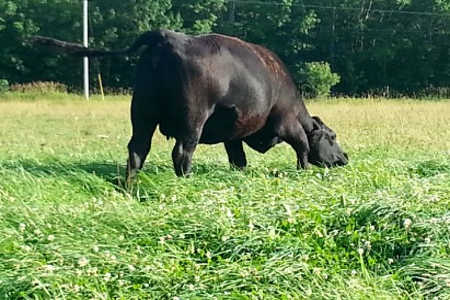By James Isleib
Farm numbers and crop acreage in the Upper Peninsula are relatively small compared to the entire state of Michigan. Based on 2012 information from the Michigan Agricultural Statistics Service (MASS), only 3% of Michigan’s farms were in the Upper Peninsula. With 3% of the state’s population living in the Upper Peninsula, this makes sense, even though the Upper Peninsula contains 29% of Michigan’s land mass. Climate and soils in most of the region are not conducive to corn, soybean and other cash crops. However, based on 2017 information from MASS, the Upper Peninsula represents 13% of Michigan’s hay (not including pastures not harvested as hay), 23% of its oats, 34% of its feed barley and about 3% of its corn silage and potatoes.
Most of the hay and pasture in the Upper Peninsula is composed of grass and grass/legume mixture. Dairy farms on suitable soils utilize alfalfa. Where alfalfa is in the dairy rotation, rotations are usually shorter than on other types of farms. These farms may include beef cow-calf, sheep, horse, other livestock operations and farms selling hay.

Hayfield/pasture in Michigan's Schoolcraft County. Photo by Jim Isleib, MSU Extension.
When hay fields or pastures are reseeded, farmers should select proven and tested species and varieties. Of course, cost is an issue, but keep in mind that the cost of seed is a very small factor when averaged over the stand life of possibly many years.
The new Michigan State University Extension publication E3309, “Recommended Hay and Pasture Forages for Michigan” by MSU forage specialist Kim Cassida and MSU Extension forage educator Phil Kaatz, provides an excellent guide for seed selection decisions. The 12-page publication includes descriptions of common species, several handy tables listing species characteristics, a section with tips on seed mixtures for various purposes, and a step-by-step guide for formulating a forage seeding mixture. Many farmers opt to buy a preformulated commercial hay or pasture seed mix. Keep in mind that you can prepare a specific mix for your farm based on your experience and good research information.

Hayfield/pasture in Michigan's Iron County. Photo by Jim Isleib, MSU Extension.
For Upper Peninsula beef producers with long rotations, longevity of forage species may be of high interest. Using the tables in the publication, selecting longer-lasting productivity can be considered. For example, cool season grasses with longer stand life include species such as Kentucky bluegrass, meadow bromegrass, timothy, tall fescue, smooth bromegrass and reed canary grass. Orchardgrass, meadow fescue and perennial ryegrass are rated with less stand life expectancy. Similarly, alfalfa and kura clover are rated with longest expected stand life, followed by Birdsfoot trefoil and then red and alsike clovers. Many other characteristics are included in convenient table form, including recommended uses, seeding characteristics, yield potential and other agronomic details.
Source : msu.edu